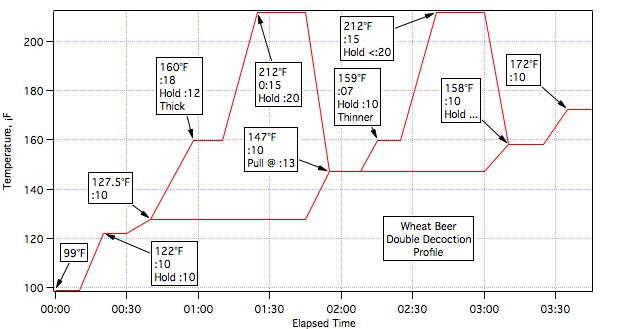HIlife
Well-Known Member
I'm a molecular biologist who recently got into brewing because it's a lot of what I like about science - pressure + beer. Anyhow, I've been really interested in grain enzymatic activity at mash temps (in that they're nowhere near germination temps) and came up with a practical hypothetical question.
From what I've read, barley beta-amylase is optimally active around 130F(ref), which is in range of a normal protein rest. That's not an issue when mashing barley because its starch gelatinization temperature is above 140F. However, the gelatinization temperature of wheat starch is around 125F(ref), meaning that at protein rest temps the wheat starch is actually available for conversion to the optimally active beta-amylase.
From a practical standpoint, if you are doing a 15-20 minute protein rest on a beer that is 60-70% wheat, should you mash shorter/hotter for the sac rest in order to maintain body and not dry it out like crazy? Or did I just come up with a problem that doesn't really exist?
From what I've read, barley beta-amylase is optimally active around 130F(ref), which is in range of a normal protein rest. That's not an issue when mashing barley because its starch gelatinization temperature is above 140F. However, the gelatinization temperature of wheat starch is around 125F(ref), meaning that at protein rest temps the wheat starch is actually available for conversion to the optimally active beta-amylase.
From a practical standpoint, if you are doing a 15-20 minute protein rest on a beer that is 60-70% wheat, should you mash shorter/hotter for the sac rest in order to maintain body and not dry it out like crazy? Or did I just come up with a problem that doesn't really exist?


